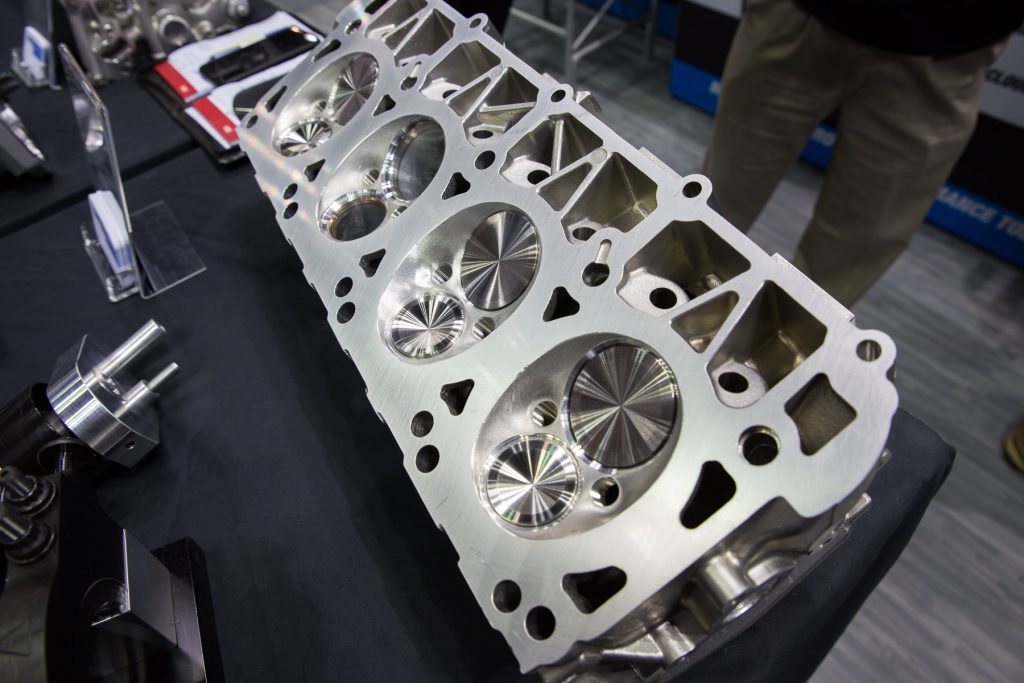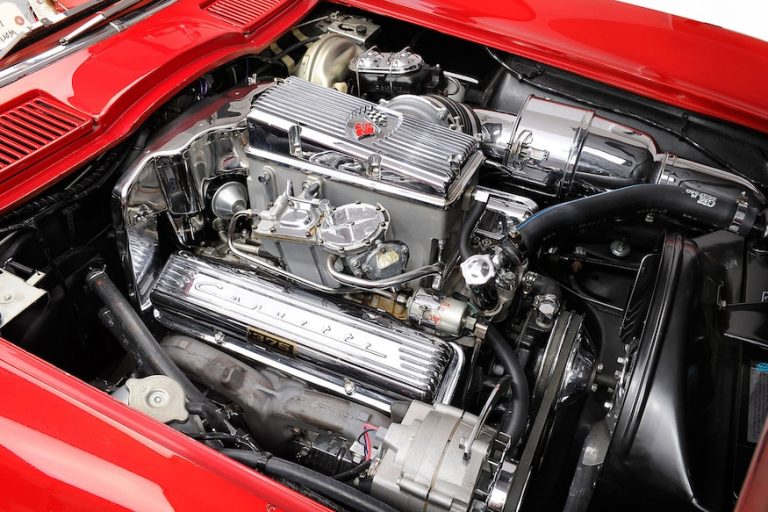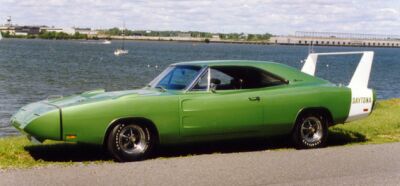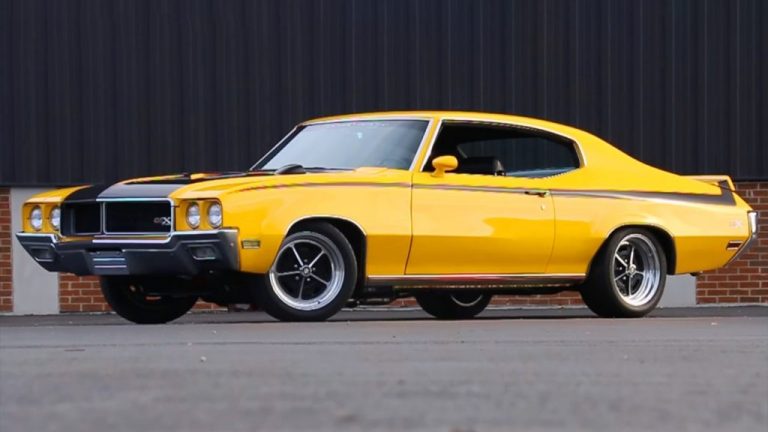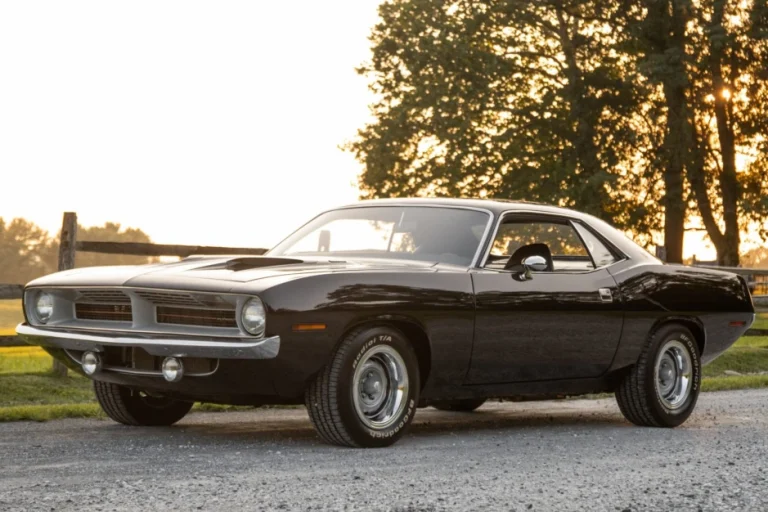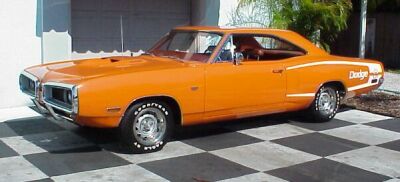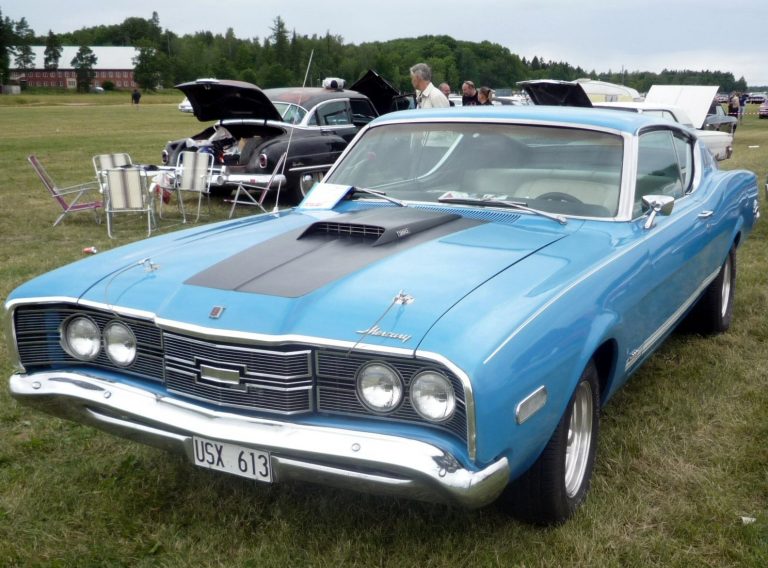6.2 HEMI Hellcat Engine Guide

Meet Austin
Austin has been a muscle car enthusiast since an early age with his Dad having a collection including a 1965 Mustang, 1968 Mercury Cougar, and a 1969 Mustang Mach 1 among many others. Austin received a technical writing degree from University of Colorado Denver with the intentions of becoming an automotive journalist. His automotive knowledge, enthusiasm, and hands on experience allow him to craft detailed, accurate, and high-quality articles for the passionate Muscle Car Club audience.
The 6.2L HEMI Hellcat was first introduced in 2015 as a supercharged extension of the Gen III HEMI engine family. Powering both Challenger and Charger models with the same Hellcat namesake, the engine quickly gained the reputation of being the top dog of the American muscle scene and could back it up on the strip.
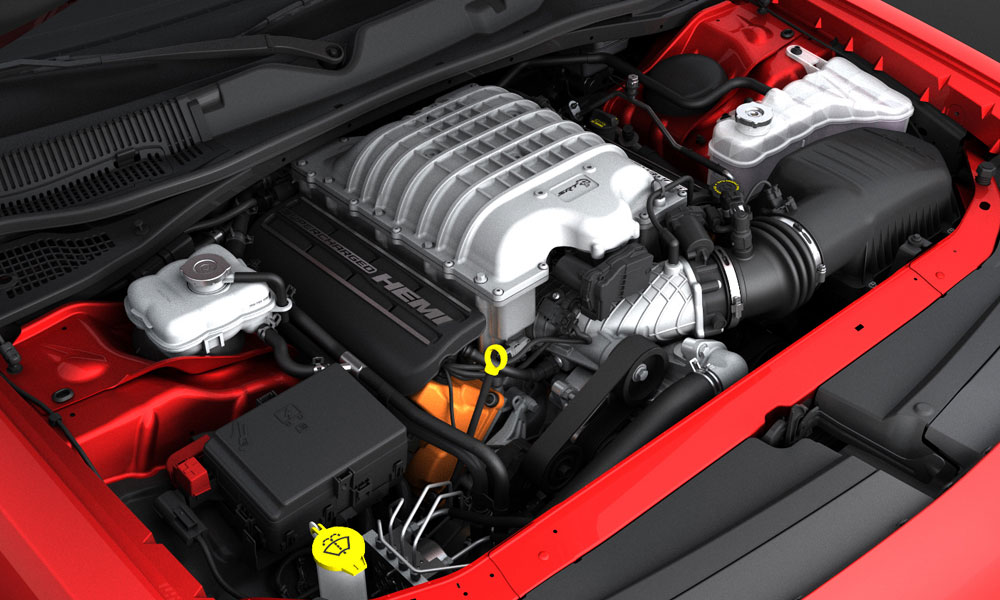
In this guide, we’ll cover the Chrysler 6.2L HEMI Hellcat including the engine’s specs, design, variants, reliability issues, and common modifications.
Specs
| Engine | 6.2L HEMI Hellcat |
| Engine Family | Chrysler Gen III HEMI |
| Model Years | 2015-Present |
| Displacement | 6.2 Liters |
| Aspiration | Supercharged |
| Configuration | 90° V8 |
| Compression Ratio | 9.5:1 |
| Bore and Stroke | 4.09 in x 3.578 in |
| Valve Train | Overhead Valve, 16-valve (2 val/cyl) |
| Variable Valve Timing | Yes |
| Fuel System | Multipoint Fuel Injection |
| Head Material | Aluminum |
| Block Material | Cast Iron |
| Horsepower Output | 707-850 horsepower |
| Torque Output | 650-717 lb-ft |
Design Basics
With such a ludicrous list of specs, it’s no surprise that the 6.2 Hellcat was meticulously designed for strength most of all, with weight savings truly taking a back seat. The engine features a cast iron block, throwing modern weight savings measures out the window in favor of strength and rigidity. The “Big Gas Engine” blocks, as they are called, are designed with a higher nickel concentration, thicker cylinder walls, and shorter water jackets for that reason.
While the block was built with a no-compromise approach to strength, the cylinder heads are focused a bit more on weight savings. The 6.2 features aluminum twin-plug cylinder heads with larger valves and a revised hemispherical combustion chamber design compared to older Gen III HEMI engines. The 6.2 features 2.14” diameter intake valves and sodium-cooled 1.65” diameter exhaust valves compared to the 5.7L HEMI’s 2.0” intake and 1.55” exhaust valves.
The 6.2L HEMI features an identical cylinder bore yet a shorter stroke to the larger 6.4L HEMI, which accounts for the 6.2L’s smaller displacement. Its 4.09” x 3.58” bore and stroke give it a short stroke engine architecture which is good for high rpm power production, explaining why the 6.2L HEMI makes peak power between 6,000 and 6,400 rpm.
Due to the fact that the 6.2L V8 was built with strength in mind, it can withstand some pretty intense internal pressures. That can be seen with the engine’s comparably high 9.5:1 compression ratio. The goal was to provide healthy engine performance while still keeping compression low enough to pair well with forced induction provided by a supercharger.
Engine Internals and Superchargers
Moving inward, the 6.2 HEMI is just as impressive as its design basics suggest. There is a lot of forged steel used in the rotating assembly. Unlike the larger 6.4L HEMI which used cast hypereutectic pistons, the 6.2 features forged alloy floating pin pistons to handle the extreme forces that they are subjected to. The engine also uses specially designed powdered metal I-beam connecting rods with additional material on the beam while also implementing stronger rod bolts. The forged steel crankshaft is so strong that it can withstand “the equivalent of five family sedans standing on each piston, every two revolutions.”
The abuse that the internal components face is pretty extreme, forcing the engineers to come up with some creative cooling solutions. The engine is equipped with an auxiliary high-flow oil pump which supplies cooling oil to cooling jets for each piston.
All of the engines in the 6.2L HEMI lineup feature an IHI twin-screw supercharger, however, they vary in displacement depending on the variant of the engine. That is actually the primary difference between the engine variants, as the internals are identical. The superchargers on all engine variants were designed to flow up to 30,000 liters of air per minute.
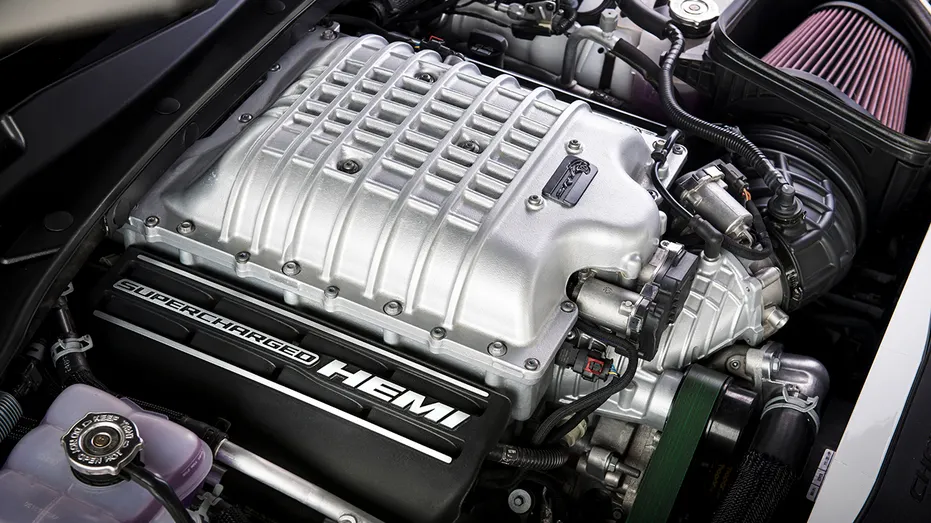
The standard SRT Hellcat engine makes use of a 2.4L supercharger rated for 11.6 lbs of boost. In contrast, the variants used in the SRT Demon, SRT Red Eye, and SRT Super Stock use a 2.7L supercharger rated for 14.5 lbs of boost. All 6.2L HEMI superchargers are powered by crankshaft-driven belts and feature 92mm throttle bodies. To provide even more cooling, the charge air is cooled by two air-to-water intercoolers that are built into the supercharger housing, keeping IATs to below 140 degrees Fahrenheit.
Camshaft Specs
All of the engine variants in the 6.2L HEMI lineup come from the factory with extremely well-performing camshafts. To break down the cam specs, the factory hydraulic cam has 278 degrees of intake duration and 304 degrees of exhaust duration with an overlap of 51 degrees, which affords better intake and exhaust lift. That results in an intake lift of 0.571 inches of intake lift and 0.536 inches of exhaust lift with a centerline of 109 degrees. All 6.2 HEMIs also utilize variable cam timing.
While the factory cam still provides a lot of room to work with in terms of power gains from other modifications, cam upgrades are still some of the most popular modifications to do to the Hellcat HEMI.
Variants
In total, there have been three different variants of the 6.2L HEMI offered in a number of Dodge vehicles since the Hellcat’s release in 2015. While the engines are relatively similar in terms of their overall construction, there are some significant differences between the engine variants that separate the higher-output variants from the lower-tier ones. The variants of the 6.2L V8 can be easily distinguished by the color of the block. Base Hellcat blocks are painted signature HEMI orange while higher tier Demon, Red Eye, and Super Stock variants of the 6.2L are painted red.
The variants of the 6.2L HEMI can get a little bit convoluted since power ratings and different models have been offered over the years. With that being said, the engines haven’t changed much in terms of their construction and most of the changes revolve around tuning.
6.2L Hellcat HEMI – 707/717 bhp, 650 lb-ft
The standard 6.2L Hellcat is the base model engine found in 2015–present Dodge Challenger SRT Hellcat, 2015–present Dodge Charger SRT Hellcat, 2018–2021 Jeep Grand Cherokee Trackhawk, 2021 and 2023 Dodge Durango SRT Hellcat, 2017 Ram 1500 Rebel TRX Concept, and 2021–present Ram 1500 TRX models.
It makes use of a 2.4L IHI-manufactured supercharger producing 11.6 psi of boost. The standard engine hasn’t changed much since its introduction in 2015 and still remains one of the most powerful base engines ever offered in a muscle car.
When the Hellcat Jailbreak was released in 2022, it was given a slightly uprated version of the Hellcat HEMI that was tuned to produce an additional 10 horsepower over the standard Hellcat.
6.2L Demon HEMI – 808 bhp/840bhp, 717 lb-ft
The Dodge Challenger SRT Demon was introduced in 2018 and featured a new uprated version of the 6.2L HEMI found in the standard Hellcat. The Demon HEMI is the first production engine to run on 100-octane gas, which is where the horsepower discrepancy comes into play. On its 91-octane tune, the Demon makes 808 horsepower, and 840 horsepower on its 100-octane tune. It also received a larger 2.7L IHI supercharger pushing 14.5 psi of boost.
There are also some differences in the Demon’s rotating assembly. Since the Demon HEMI is dealing with quite a bit more power than the standard engine, some crucial components were fortified. The crankshaft and pistons are made from stronger alloys than the factory Hellcat engine. Changes were also made to the connecting rods, which were strengthened around the pin bosses. The main bearings and piston rings were also optimized for the higher boost levels and higher redline.
Some changes were also made to the block design and valvetrain. The block was reworked to allow for 50% more oil to be pumped to the piston oil sprayers in addition to new high-tensile rod and main cap bolts being used. Since the Demon has a higher 6,500 rpm redline, the valves and valve springs were also modified to withstand the higher engine speeds.
6.2L Redeye HEMI/Jailbreak – 797 bhp/807bhp, 707 lb-ft
The Challenger SRT Hellcat Redeye was released in 2019 which featured a slightly detuned version of the uprated HEMI found in the Demon. The engine in the Redeye still featured the valvetrain and bottom-end goodies found on the more powerful engine, in addition to the larger 2.7L supercharger. The primary difference between the engines is tuning.
A few years later, in 2022, Dodge released the Challenger SRT Hellcat Redeye Jailbreak which is the highest trim level in the Redeye range. As a result, it was tuned to produce 10 more horsepower than the standard Redeye, bringing power up to 807 horsepower. That is the same power figure as both the Super Stock and Demon in 91-octane trim.
6.2L Super Stock HEMI – 807 bhp, 707 lb-ft
The engine found in the Challenger SRT Hellcat Super Stock, which was released in 2020, is the same high-output variant of the Hellcat HEMI found in the Redeye Jailbreak and Demon. As a result, it features the same internal components, supercharger, and power output.
Reliability and Common Problems
- Supercharger bearing issues on 2015-2016 MY Hellcats
- Fuel Rail Crossover Recall on engines built prior to February 05, 2015
- Oil Cooler Line Leaks on engines produced between Feb. 6, 2017 – May 30, 2017
The 6.2L Hellcat has overwhelmingly positive reviews when it comes to reliability. Since the engine was so overbuilt and overengineered, there isn’t much room for anything to go seriously wrong. However, there have been some notable issues, primarily in the earlier years of the engine’s development, that some Hellcat owners have experienced.
Supercharger Bearing Issues
Early model year Hellcats, including 2015 and 2016 MY engines, experienced supercharger snout bearing issues that led to noisy operation. Dodge recognized the bearing issue as a problem and switched bearing suppliers after 2016, which remedied the problem. While there was a lot of hype surrounding Hellcat supercharger bearing whine, there is no evidence to support that the noise led to any premature supercharger failures. It was simply an annoyance that some Hellcat owners had to deal with.
Ultimately, many Hellcat owners couldn’t stand the continuous sound from under the engine bay and would either have the snout rebuilt or the entire supercharger rebuilt. It is also possible to replace the bearing yourself with basic tools. The bearing itself is very inexpensive and the whole job can be done for under $200 DIY.
Fuel Rail Crossover Recall
The second common Hellcat issue revolves around the fuel rail crossover hose recall that was issued in April of 2015, concerning engines that were produced through February 5, 2015. The recall itself states that many of the affected cars were inspected and repaired before they got to owners, but it is still possible that there are Hellcats out there that still need to have the recall performed.
The recall stated that in some engines, the left side fuel rail assembly, specifically the crossover hose, could leak substantially, potentially leading to an engine fire if the problem wasn’t caught early enough. The service bulletin also said that the issue was caused by a problem in the manufacturing process where the hoses were damaged. Approximately 2,000 vehicles were affected.
As a part of a recall, the issue was fixed by certified dealers at no cost to the owner. The repair consisted of the entire left-side fuel rail and fuel crossover hose being replaced on the affected models. While it is rare that any of the affected models haven’t had the necessary repairs, it is possible that there are some early model Hellcats out there that still need the recall performed.
Oil Cooler Line Leaks
Along similar lines to the fuel rail issue, another recall was issued for Hellcats produced between Feb. 6, 2017, and May 30, 2017, concerning potential issues with oil cooler feed and return lines. According to the NHTSA, Hellcat engines produced in that interval had faulty oil cooler lines that could spontaneously fail, leading to a rapid loss in engine oil. That is obviously a pretty serious issue, as it could lead to seized engines if not caught in time.
The problem stemmed from a faulty set of oil cooler lines that didn’t meet quality control expectations but were installed anyway. Approximately 1,207 Hellcats were involved in the recall and were expected to have issues due to the faulty hoses. As with the fuel rail recall, Hellcat engines affected by the faulty lines were repaired by certified facilities at no cost to the owners. It isn’t likely that there are many on the road that haven’t had the recall done either.
Performance Mods
- Upgraded Supercharger Pulleys
- Demon Injectors
- Tune
At this point in time, there is a pretty established mod path for the Hellcat that can yield some mightly impressive power gains for cheap. The three Hellcat modifications below can yield upwards of 100-150+ horsepower with a properly dialed-in tune. That is especially impressive considering that an upgraded supercharger pulley, Demon injectors, and a tune can all be purchased and installed for less than $2,500.
Upgraded Supercharger Pulley
Upgraded supercharger upper pulleys are unquestionably the most popular mod for the Hellcat as it is by far the most cost-effective way of adding a heap more power. Replacing the upper pulley with a smaller-than-factory pulley increases the rotor speed of the supercharger, adding additional boost pressure. 2.85” pulleys are the most common street pulleys for the Hellcat, as they add around 3-4 lbs of boost while still remaining comfortable on the street.
Demon Injectors/Upgraded Injectors
When increasing the boost level of the factory supercharger with an upgraded pulley, you’ll also need upgraded injectors to keep up with the additional airflow. Most Hellcat or Redeye owners simply upgrade to 700cc Demon injectors, as they are relatively inexpensive and have plenty of headroom for the additional power made by an upgraded 2.85” pulley. However, if you are planning on doing more upgrades in the future, you might want a bit more injector headroom, as 700cc injectors typically tap out around the 840 horsepower mark.
Tune
The remaining piece of the puzzle is a tune. Of course, if you are changing the airflow and fueling characteristics of the engine, you’ll also need a tune to compensate for the changes. A high-quality tune is of utmost importance when it comes to the Hellcat, as there have been numerous reports of bad tunes ruining engines in the Hellcat community.
Obviously, a custom tune is the most advantageous form of tune from both a safety and performance perspective. However, if there isn’t an established tuner in your area, there are many reputable tuners, like HHP, Barth Tuning, and Dusterhoff Tuning, who offer email tunes that are tailored for your specific modifications. Tuning is a very nuanced topic and if you are interested in learning more about it, I recommend reading about quality tuners on the Hellcat forums.
The 6.2L HEMI Hellcat is Truly One of the Most Impressive American Engines Ever Made
Mopar’s reputation in the engine-building scene is one of the most impressive of all American automotive manufacturers. The legacy of the HEMI is one that can’t be touched and still extends into the modern era with engines like the Hellcat HEMI.
The 6.2L Hellcat is unparalleled when it comes to raw supercharged horsepower, and remains one of the most powerful American engines ever made. It was designed and constructed to withstand the most strenuous internal forces, utilizing forged internals, an advanced cast iron block design, and impressive cooling measures.
Over the Gen III Hellcat’s build cycle, it has powered a number of different Hellcat variants including the standard SRT Hellcat, SRT Demon, SRT Redeye, SRT Super Stock, and multiple other Jailbreak variants. While they share a similar overall construction, the high-output variants also feature some significant changes including a larger supercharger, block design revisions, an upgraded cam, and other upgrades.
Despite pumping out such a ludicrous amount of horsepower, the Hellcat has proven to be an extremely reliable engine. Outside of some initial teething problems with the earlier production engines, including supercharger bearing issues and fuel rail crossover leaks, there aren’t any major common problems to report.
The Hellcat is also an extremely modifiable engine that is very easy to squeeze a significant amount more power out of. With three simple mods including a supercharger pulley upgrade, upgraded injectors, and a tune, you can have an 800+ horsepower Hellcat for under $2,500.
There are very few downsides to the 6.2L HEMI Hellcat and it will unquestionably go down in history as one of the most impressive engines ever made.

